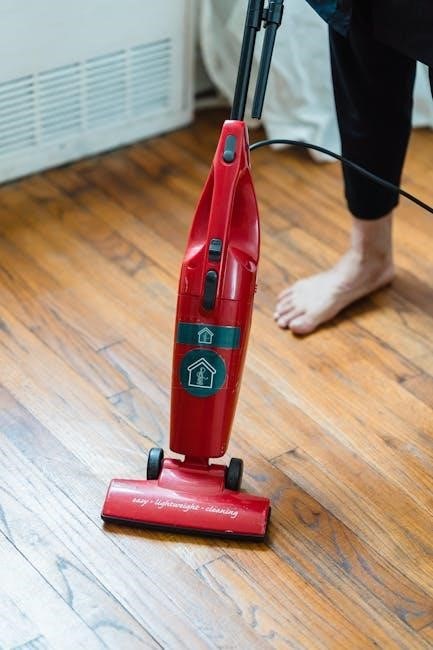Home elevators have emerged as an innovative solution in modern residential design‚ serving purposes that cater to homeowner needs. These systems allow vertical transportation within a residence‚ enhancing accessibility and mobility for the occupants.
Overview of Home Elevators and Their Growing Popularity
Once considered a luxury‚ home elevators have steadily gained popularity‚ evolving into practical options for various lifestyles. This reflects a growing recognition of accessibility and inclusivity in residential spaces. These elevators provide a safe and reliable means of overcoming the challenges posed by stairs‚ especially beneficial for elderly individuals‚ those recovering from injuries‚ or anyone with disabilities. Home elevators are now often viewed as essential components rather than mere luxuries‚ as they significantly improve the quality of life for users.
Installing a home elevator offers advantages that significantly enhance the quality of life for residents. One primary benefit is increased accessibility‚ particularly for elderly individuals or those with disabilities in the household.
Benefits of Installing a Home Elevator
Increased Accessibility for Residents with Mobility Issues
A home elevator allows individuals with mobility challenges to navigate between floors easily‚ thereby promoting independence and reducing the need for assistance. This aspect is crucial in encouraging a sense of autonomy for residents who might struggle to move freely within their own homes. Reduced reliance on stairs can help prevent injuries related to falls while minimizing joint stress. Ultimately‚ this promotes a healthier lifestyle by allowing individuals to maintain mobility longer. Many homeowners opt for these elevators as they provide a safe and reliable means of overcoming the challenges posed by stairs.
One of the most significant cons is the initial installation cost. The price of acquiring and installing a home elevator can range significantly‚ often exceeding tens of thousands of dollars.

Potential Drawbacks to Consider
Initial Installation Costs and Ongoing Maintenance Expenses
While the decision to install a home elevator offers benefits‚ there are drawbacks that should be considered. One of the significant cons is the initial installation cost. The price of acquiring and installing a home elevator can range significantly‚ often exceeding tens of thousands of dollars. In addition to the upfront investment‚ ongoing maintenance expenses can also add to the overall cost of ownership. Home elevators require regular servicing to ensure safety and compliance with local regulations‚ which includes inspections‚ repairs‚ and upgrades. Homeowners must be prepared for these ongoing costs.
Types of Home Elevators Available
Home elevators are solutions for enhancing accessibility in multi-story residences. When considering a home elevator installation‚ it is essential to examine the different types available‚ including traditional hydraulic elevators‚ and electric traction units.
Hydraulic Elevators: Functionality and Space Requirements
Traditional hydraulic elevators function using a fluid-driven piston to move the elevator car. They tend to be robust and suitable for larger homes‚ accommodating heavier loads while often being designed for multiple stops. However‚ their installation requires a dedicated machine room‚ which can take up valuable space within the house. Additionally‚ hydraulic systems generally require more maintenance due to their intricate machinery and fluid components. Homeowners must consider the spatial implications and maintenance demands when opting for a hydraulic elevator system.
Pneumatic Vacuum Elevators: Design and Installation Benefits
Pneumatic vacuum elevators utilize air pressure to lift and lower the elevator car‚ known for their sleek design and contemporary aesthetics. One significant benefit is the absence of cables and pulleys‚ simplifying the installation process significantly. Due to their unique construction‚ pneumatic elevators typically have a smaller footprint and can be installed without the need for a machine room‚ saving valuable space. They are particularly suited for homes where space is at a premium‚ offering both aesthetic and functional advantages for homeowners.
Cost Factors for Home Elevator Installation
Installing a home elevator involves financial considerations that homeowners should be aware of. A significant expense is the initial purchase price of the elevator itself‚ ranging based on features and brand.
Initial Purchase Price of the Elevator Itself
The initial purchase price represents a substantial part of the overall investment in a home elevator. The cost varies widely‚ influenced by factors such as the elevator type‚ its weight capacity‚ and the number of floors it services. Customization options‚ including design features and advanced controls‚ can further impact the initial price. Elevators serving more floors naturally incur higher costs due to increased complexity and materials. Choosing between a basic model and a more feature-rich option will also significantly affect the upfront investment required for your home elevator project.
Installation Fees and Retrofitting Considerations
Installation fees are a significant component of the overall cost‚ influenced by the complexity of the project and the need for retrofitting. Modifying an existing home to accommodate an elevator often involves structural changes‚ potentially increasing expenses. Permit fees and compliance with local regulations also contribute to the total installation cost. Hiring qualified professionals ensures safety and adherence to standards‚ justifying the expense. Retrofitting considerations include assessing the existing structure’s suitability and making necessary reinforcements. The complexity of integrating the elevator seamlessly into the home’s design also affects the final cost.
Safety Regulations and Compliance
Prioritize professional installation to ensure safety‚ efficiency‚ and compliance with regulations. Professional installation is important for safety and compliance‚ ensuring the elevator meets regulatory standards and operates efficiently for the long term.
Importance of Professional Installation for Safety and Compliance
Ensuring the safe and reliable operation of a home elevator necessitates professional installation. Adherence to safety standards and regulatory compliance is paramount. Florida law mandates permits from the Bureau of Elevator Safety for installations. Professional installers guarantee adherence to local regulations and building codes. Their expertise ensures proper functionality‚ minimizing potential hazards. Moreover‚ professional installation confirms the elevator’s structural integrity and longevity. Neglecting professional installation may compromise safety‚ void warranties‚ and lead to costly repairs. Engaging certified professionals is a crucial investment for peace of mind and long-term reliability;
Studies suggest that installing a home elevator can increase your property value‚ making it a worthwhile investment for the future. Elevators add a touch of luxury and modernization to a home.

Impact on Home Value and Resale
Elevated Property Value with Home Elevator Installation
Installing a home elevator can significantly increase your property’s value‚ making it a worthwhile long-term investment. As more individuals seek convenient living solutions‚ a residential elevator becomes an appealing feature for prospective buyers. Elevators not only provide practicality but also add a touch of luxury and modernization to a home‚ making it stand out in the real estate market. This can be particularly beneficial in multi-story homes‚ where navigating stairs may be a limiting factor for some buyers. A home elevator is now often viewed as essential components rather than mere luxuries.
Planning for renovations alongside elevator installation is crucial to ensure that both aspects complement each other seamlessly. Proper planning helps minimize additional renovation costs that may arise due to oversight during the initial phases.
Planning and Renovation Considerations
Integrating Elevator Installation with Home Renovations
When integrating elevator installation with home renovations‚ careful planning is crucial. This ensures that both aspects complement each other seamlessly‚ minimizing additional costs due to oversight during the initial phases. Prioritize safety‚ space‚ and design preferences when planning for a residential elevator installation. This guarantees a smooth integration with your home. Proper planning can also help in minimizing additional renovation expenses that may arise due to oversight during the initial phases of elevator installation. Consider legal requirements to ensure the functionality with home.

Cost-Saving Strategies and Budgeting Tips
Explore cost-saving strategies such as regular maintenance and energy-efficient options. This minimizes operational expenses and maximizes the value of your investment. Budget-friendly tips will allow you to manage cost without compromising on safety.
Regular Maintenance and Energy-Efficient Options
Prioritize safety‚ space‚ and design preferences when planning for a residential elevator installation to ensure a seamless integration with your home. Explore cost-saving strategies such as regular maintenance and energy-efficient options to minimize operational expenses and maximize the value of your investment. Consider advanced control options and explore different price ranges to find a solution that fits your budget. Look into budget-friendly tips for installing a home elevator to manage costs without compromising safety or quality. Regular maintenance ensures optimal performance and longevity.

Making an Informed Decision
When considering installing a home elevator‚ it’s essential to weigh the benefits against the potential drawbacks. Evaluate the initial costs‚ ongoing maintenance‚ and space requirements. Understand the impact on your home’s value and resale potential. Prioritize safety by ensuring professional installation and compliance with regulations. Explore cost-saving strategies and energy-efficient options. By carefully considering these factors‚ you can make an informed decision about whether a home elevator is the right choice for your needs and budget‚ ensuring a valuable and safe addition to your home.
